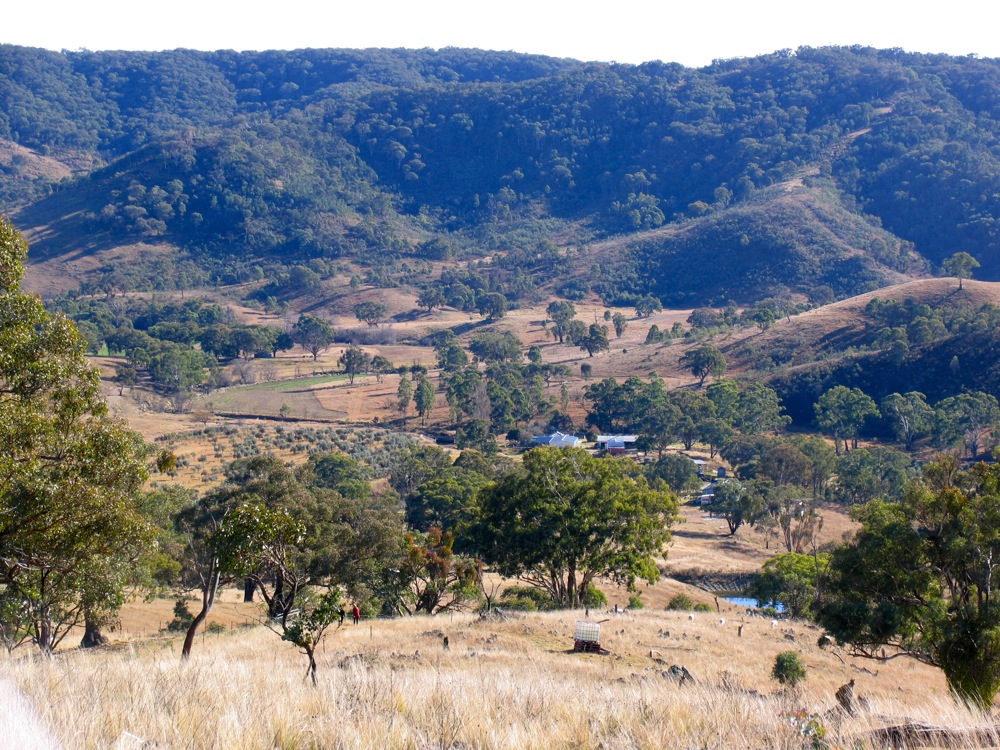
Where should I buy land? Where’s a good area? What should I be looking for in a landscape?
This question is something that Nick gets asked a lot when he’s teaching and consulting, so we thought we’d ask Joel Salatin’s opinion while he was at our farm last Summer. Apparently we’re all in agreement with the answer: go where you will be happy with the company, regardless of the landscape. Because growing topsoil is the easy bit.
In our case, that means going where our family are. We know that there’s ways to create an abundant thriving farm, no matter what the condition of the land, if you roll with the parameters of landscape and climate, take your time, and apply good design.
But creating community, and people around you whose company you enjoy, and who will help you stay sane through the tough bits, is harder to manifest. So if you can find somewhere that already has kindred spirits, family, or maybe just the kind of folks you like, chances are you will thrive there.
I might add that this realization has changed how I see Milkwood. I have to admit that when we first got here i did, once or twice in my various darker moments, call it a scrubby-bare-assed-goat-country-with-no-rain-and-no-point-piece-of-nowhere. But now I see it differently.

Looking down the hill to Kirwin, Nick’s parent’s farm, next door to Milkwood. It ain’t much, but it’s home…
Now I see a recovering ridge line with our family on the other side and people we know down the road. I see biomass being built, perennial grasses returning, compost doing great things and seed balled acacias and lomandras binding the rougher bits together until the ground covers return.
I also see a piece of land that we, with help from all the amazing knowledge and energy that passes through Milkwood in the form of teachers, friends, comrades and enthused strangers, are actively turning into a thriving farm.
And I see a future, because we’ve got people around us who care, and will cheer us on, cheer us up, hold my baby and help us out when it’s needed, as we make this place happen.
f you’d like to join us and Joel Salatin for his 2011 NSW workshop on how to create small, thriving regenerative agriculture enterprises and communities, it’s coming up on 2nd August at Jamberoo.
Or if you’re outside NSW you could have a look at Joels’ other Aussie workshops as outlined at www.RegenAG.com.
Watch Milkwood: choosing farmland? Joel Salatin + Nick Ritar on YouTube
Related posts:
- Joel Salatin talking on debt free farming for beginners
- Joel Salatin returns to Australia
- More of our posts about farming













I could really relate to that last sentence, when the people in the local community say: “it will never work here.” The “it” meaning growing stuff, LOL. I should tell my mandarin tree, passionfruit vine, sweet potatoes, herbs, oranges and strawerries (which are all producing in the middle of winter) to stop working, because the majority reckon it’s just plain impossible to have that kind of outcome here. Having said that, you have to want to grow stuff in order to make it work. You have to want to spend your weekends covered in muck and running around with the… Read more »
agreed it all takes effort, but what doesn’t? and what better use of one’s energy? I can’t think of any… but yeah it is tough in the early days… and it’s the community around you that makes or breaks that period… worth it, tho!
Hi Kirsten,
Thanks for the post. I was interested in the seedballed acacias. Just wondering whether you scarified the seed before seedballing or whether this was unnecessary. How did the seedballs fare? Good germination rate?
Sorry for off topic questions. I’m just really keen to hear more about how seedballs go in dry med climates.
Harry
http://perennialideas.ptpc.com.au
Hi harry – yes, we did scarify the acacia seeds before seedballing them, and i have to say I’m pretty happy with the strike rate – I’ll post some photos shortly of a whole section of swale where all acacias growing are the result of seedballs. Also had a pretty good run with tagasate in this context too.
I so so agree with Joe about this. A thriving community is rarer, and harder to create, than a thriving garden. Good soil will only last a few seasons, even if you start with it; all soil is biologically created, so you might as well start with the idea that soil husbandry is a given. But community is something that needs to be created collectively, and that takes skills that are fast being lost in our urbanised western culture. The major obstacles to living sustainably are political, not agricultural, at the micro and the macro level.
aye to that, Linda!
finding this article helped me from a dark place. We just bought a piece of land, and the soil is clay and full of rocks, yet we really are enjoying and putting lots of energy into relationships with our new neighbors. The getting started bit is daunting though.
good luck, Marita! where is your land?